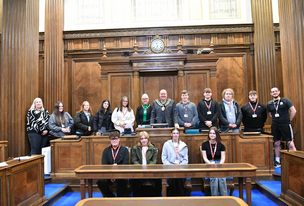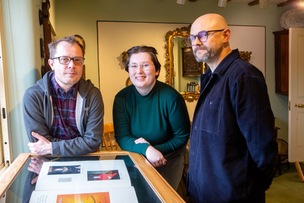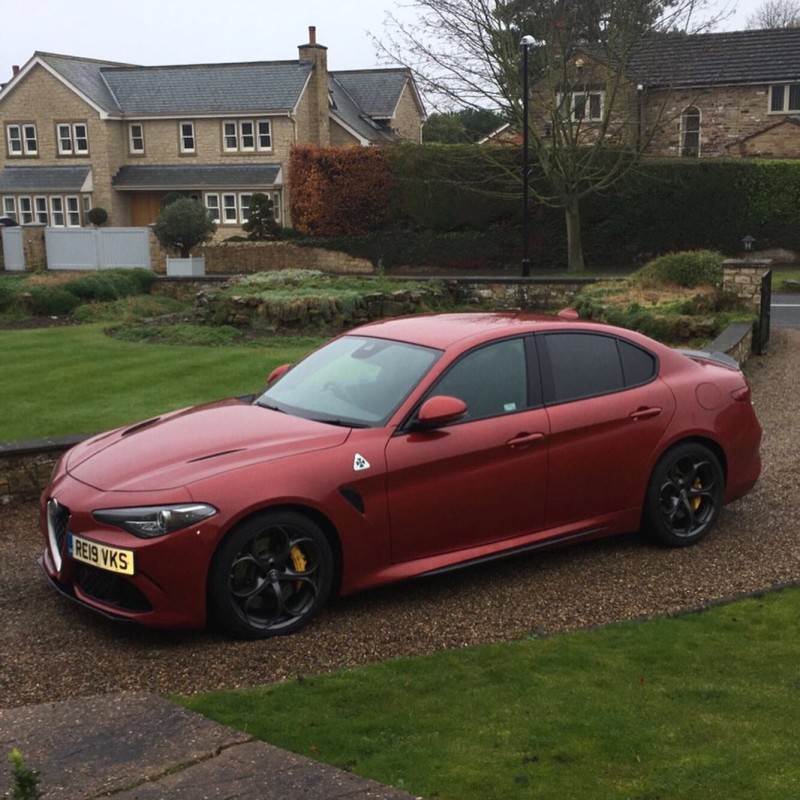IF I think of guaranteed disappointments which have caused no end of misery in my life, I can recall three key players responsible for continuously plastering a forlorn-looking expression on my face.
Firstly, two football teams: Leeds United and England. My love of the former began when I was a seven-year-old but since the heady, albeit debt-ridden days of the Champions League, I’ve been knocked down more times than a journeyman boxer by a host of dodgy owners, even dodgier managerial appointments and of course those soul-destroying defeats when it mattered the most.
England, on the other hand, don’t play as often but their major tournament history during my lifetime at least has been woeful to say the least, apart from last summer’s heroics. However, I’ll never forgive them for losing to Iceland and while both might be on somewhat of a renaissance at the minute, you always get the sense that either outfit could deliver another knockout blow whenever they see fit.
But what’s the third? That one’s car-related, and it comes in the form of Alfa Romeo. Beautiful bodies, typically stylish Italian interiors but ultimately they’re the makers of cars which unravel - a bit like Leeds United - when the going gets tough or they’re pitted against a German rival. For too long we’ve defended them purely because they’re different, a bit temperamental and after a host of gorgeous-yet-flawed GTAs, the stunning 8C and the catastrophically disappointing 4C, the motoring world simply needed an Alfa that had the substance to match its style and bloody the noses of M3s, RS4s and C63s.
Guess what? We’ve only gone and been given one. After decades of below-par vehicles, the Giulia Quadrifoglio’s brilliance has immediately got rid of the ear-splitting tyre screech of a 147 GTA’s understeer from my mind and the 4C’s wheezy engine, awful gearbox and frankly vile steering wheel.
The Quadrifoglio - a name which has been placed onto Alfa’s big Stelvio and the pretty Giulia - has a 2.9-litre V6 with two turbos for good measure, creating 503bhp and a similar dose of torque. While both share this magnificent, Ferrari-derived unit, the Giulia goes without its bigger brother’s four-wheel-drive system and instead sends each and every one of its cavallos to its gargantuan rear tyres.
Starting at £64,900, the range-topping Giulia is pretty well-equipped as standard, but it’s always worth perusing a car’s spec sheet to see what I’d recommend. First up, the costly Sparco seats might be a £3,250 option but they’re absolutely brilliant; comfy, supportive, they look like a work of art and they’re backed in all-important carbon fibre. The 19-inch ‘telephone dial’ alloys are a snip at £695, Italian tricolour-style interior stitching costs £195 and the flat-bottomed carbon steering wheel is a very acceptable £495. I’d go without the £2,500 Competizione Red and the £950 Harmon Kardon sound system, though.
I can’t recall Alfa ever making an ugly car, so it’s not really surprising that the Giulia is a bit of a looker. The traditional front design remains - registration plate to the side, prominent triangular-shaped nose and gaping vents below - but the stance of the Quadrifoglio is what’s really special. There are two nostrils on the bulging bonnet, which is also carbon fibre, and the lightweight material continues on the front splitter, side skirts and the boot lip spoiler at the rear. It’s squat, it’s purposeful and its design is perfect - through my eyes it’s one of the best-looking four-door saloons ever made this side of an E39 M5.
Open the driver’s door and you’re met with an interior that’s dripping with more carbon which is fitted on the divide between the driver and passenger, the aforementioned optional seats and steering wheel, and the two door pulls’ housing. It feels plush and a refreshing change from the Germans’ undeniably top drawer efforts. Prod the Ferrari-like starter button, which is also housed on the perfect steering wheel, and the V6 fires into life with a purposeful thrum, although it’s not too intrusive on tickover. Slide into ‘D’ and the eight-speed automatic gearbox, sourced from ZF - a firm which provides transmission units to Bentley - will cause no drama. It’s quiet, refined and although there’s a quad-exit exhaust, its surprisingly mute tone is at first a disappointment.
However, the lack of aural theatre is remedied by twisting its ‘DNA’ toggle round to ‘Race’, which opens the exhaust system’s valves and transforms the whole car, but there’s a huge catch with this. Given it’s November, it’s rained just about every day for a month and the temperature’s barely above freezing, opting for Race means that while you unlock the car’s wonderful voice, you also disengage its essential stability control. So, in a nutshell, if you want the full-on theatrics of its exhaust, you’re left with 503bhp going to the rear wheels with no safety net to catch you.
When I say no safety catch, I mean it. The Quadrifoglio’s not one of these modern performance cars which my mum - whose driving ability is questionable to say the least - could get in and drive briskly from the off. The Alfa, even in its default setting, will bite without a moment’s hesitation and will light up its rear wheels at the drop of a hat. When it does it’s just you, it, a slippery surface and potential disaster and boy do I love it. Put your foot to the floor in first or second gear, maybe even third, and you’ll lose control if you’re not on the ball. It truly is that wild.
You’re left scratching your head why its engineers didn’t just follow other manufacturers and put a simple exhaust button on the dashboard, but then you remember it is an Alfa and therein lies the issue - they just don't do things like you'd expect.
Given the time of the year, you can only really access about half of its 503bhp and while it feels fast, you’re constantly searching for a window of opportunity to unleash the full extent of the power. When you get that break, it’s every bit as phenomenal as you’d expect: 60mph comes up in under four seconds and it has a 191mph top speed, but the real-world delivery is the most intriguing aspect as the engine just doesn’t have turbo lag or ever feel like it’s running out of puff at its top end.
While the intimidation and power remain key parts of the experience, there’s some other-worldly traits which shine even brighter. The brake pedal, for example, is perfectly modulated: there’s bite right at the top of the travel and the stopping power - even without the optional £5,500 carbon ceramic discs which aren’t needed - is immense. The steering is equally great, with excellent feel and a hyper-alert aspect which adds to the ‘four-door Ferrari’ billing that’s been bandied about in the motoring press.
Although my missus wasn’t too enthralled by its willingness to kill you at every junction, cars like the Giulia Quadrifoglio are rarer-by-the-day throwbacks, things which should be celebrated while they’re here. They focus your mind, they make you concentrate on driving and when you find a rare dry patch of road in November, primed in third, it makes you giggle like a youngster on Christmas morning. It’s a full-blooded, no-nonsense hit of pure adrenaline and I absolutely love it.





























